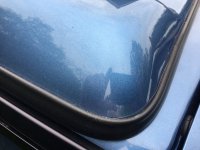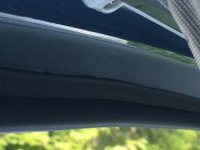burnercan
Lifetime VIP Member
I haven't read through the 200+ pages on this T5-T6 subject but I'll offer this:
A couple of products in use in aviation to slow and/or prevent galvanic corrosion (corrosion between dissimilar metals, steel and aluminium in this case): CorrosionX and ACF-50. Both are slightly oily liquids, like highly glorified WD-40, and as such need to be reapplied when washed off. Aircraft skins are almost always a mid-grade aluminum and most anchor nuts and many other fittings made of steel often riveted directly onto the skin. Typically this doesn't pose a big problem because the joints are, for the most part, dry unless it rains. Fresh water isn't a superb electrolyte but when salt is added it suddenly is. So seawater, in the case of aircraft I have maintained, or salty grime in the case of a Cali pop top seal on a wintery road, can make the problem nearly uncontrollable. Low coastal areas may also have high salt content in the air, making the rain equally destructive as is rinses salty deposits off of surfaces concentrating them in areas where the run-off collects. Such as, you guessed it, in the roof seal. I've tested/used both of these products with good results on areas where this type of corrosion was problematic. And no, I don't work for either of these guys...
On the old Westys, the pop top seal was held in place with a metal grip. Over time, the grips would rot out and the seal would fall off. This wasn't a galvanic reaction since there was only one metal, but that one metal was cheap, untreated carbon steel so as soon as it gots wet it would just rot. Since the top was fibreglass all that needed doing was to replace the seal and she looked just like new. Retro-fit seals for a T3 Westy are certainly available without the metal and work just fine. As has been suggested/asked here, the profile for the T5-T6 top is probably available as well. The good news is, once you remove the the electrical potential by removing one of the dissimilar metals, the corrosion will pretty much stop. So if the damage isn't too bad, at least it won't get any worse.
When I get my spanky new Beach (in approximately the time it takes for a baby to arrive from conception) the first thing I will do is remove the seal and apply one of the above mentioned products. Then I'll set about finding a non metallic replacement seal. Since it will be inside the seal, it shouldn't wash out easily so may only need to be applied once every year or so.
Can't wait!!!!
A couple of products in use in aviation to slow and/or prevent galvanic corrosion (corrosion between dissimilar metals, steel and aluminium in this case): CorrosionX and ACF-50. Both are slightly oily liquids, like highly glorified WD-40, and as such need to be reapplied when washed off. Aircraft skins are almost always a mid-grade aluminum and most anchor nuts and many other fittings made of steel often riveted directly onto the skin. Typically this doesn't pose a big problem because the joints are, for the most part, dry unless it rains. Fresh water isn't a superb electrolyte but when salt is added it suddenly is. So seawater, in the case of aircraft I have maintained, or salty grime in the case of a Cali pop top seal on a wintery road, can make the problem nearly uncontrollable. Low coastal areas may also have high salt content in the air, making the rain equally destructive as is rinses salty deposits off of surfaces concentrating them in areas where the run-off collects. Such as, you guessed it, in the roof seal. I've tested/used both of these products with good results on areas where this type of corrosion was problematic. And no, I don't work for either of these guys...
On the old Westys, the pop top seal was held in place with a metal grip. Over time, the grips would rot out and the seal would fall off. This wasn't a galvanic reaction since there was only one metal, but that one metal was cheap, untreated carbon steel so as soon as it gots wet it would just rot. Since the top was fibreglass all that needed doing was to replace the seal and she looked just like new. Retro-fit seals for a T3 Westy are certainly available without the metal and work just fine. As has been suggested/asked here, the profile for the T5-T6 top is probably available as well. The good news is, once you remove the the electrical potential by removing one of the dissimilar metals, the corrosion will pretty much stop. So if the damage isn't too bad, at least it won't get any worse.
When I get my spanky new Beach (in approximately the time it takes for a baby to arrive from conception) the first thing I will do is remove the seal and apply one of the above mentioned products. Then I'll set about finding a non metallic replacement seal. Since it will be inside the seal, it shouldn't wash out easily so may only need to be applied once every year or so.
Can't wait!!!!




![20171005_093400[1].jpg 20171005_093400[1].jpg](https://vwcaliforniaclub.com/data/attachments/24/24866-1afaae0a15c78e7cc41d0b50d8cacfce.jpg)













